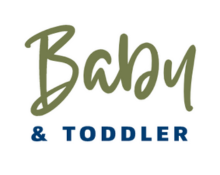
When choosing a bottle for a breastfed baby, it’s important to select a bottle that supports a natural feeding experience and minimizes nipple confusion. Here are some factors to consider:
Nipple shape and flow: Look for a bottle nipple that closely resembles the shape and texture of a breast nipple. It should be soft, flexible, and have a wide base. Opt for a slow-flow nipple to mimic the slower pace of breastfeeding and allow your baby to control the milk flow.
Anti-colic features: Choose a bottle with anti-colic features, such as venting systems or air valves, to reduce the ingestion of air during feeding. This can help minimize discomfort, gas, and colic in your baby.
Size and shape: Consider the size and shape of the bottle that is comfortable for both you and your baby to hold. Look for bottles with ergonomic designs and easy-to-grip shapes that make feeding sessions more comfortable.
Material: Bottles are commonly made of glass or BPA-free plastic. Both options are safe for use, so choose the material that you prefer. Glass bottles are durable and easier to clean but can be heavier. BPA-free plastic bottles are lightweight and less prone to breakage.
Ease of cleaning: Opt for bottles that are easy to assemble, disassemble, and clean. Bottles with wide necks are generally easier to clean compared to those with narrow openings. Consider dishwasher-safe bottles or ones that can be easily sterilized.
Your baby’s preference: Keep in mind that every baby is different, and what works for one may not work for another. Your baby may have their own preference for a particular bottle nipple shape or brand. It may require some trial and error to find the bottle that your baby accepts and feeds well from.
It’s also worth considering using paced bottle feeding techniques, which involve holding the bottle in a more upright position and allowing the baby to take breaks during feeding. This helps mimic the natural flow and pace of breastfeeding and can prevent overfeeding.
Remember, even if you introduce a bottle, it’s beneficial to continue breastfeeding directly whenever possible to maintain your milk supply and strengthen the breastfeeding bond. If you have any concerns or need additional guidance, consult with a lactation consultant who can provide personalized advice based on your baby’s specific needs and your breastfeeding goals.
